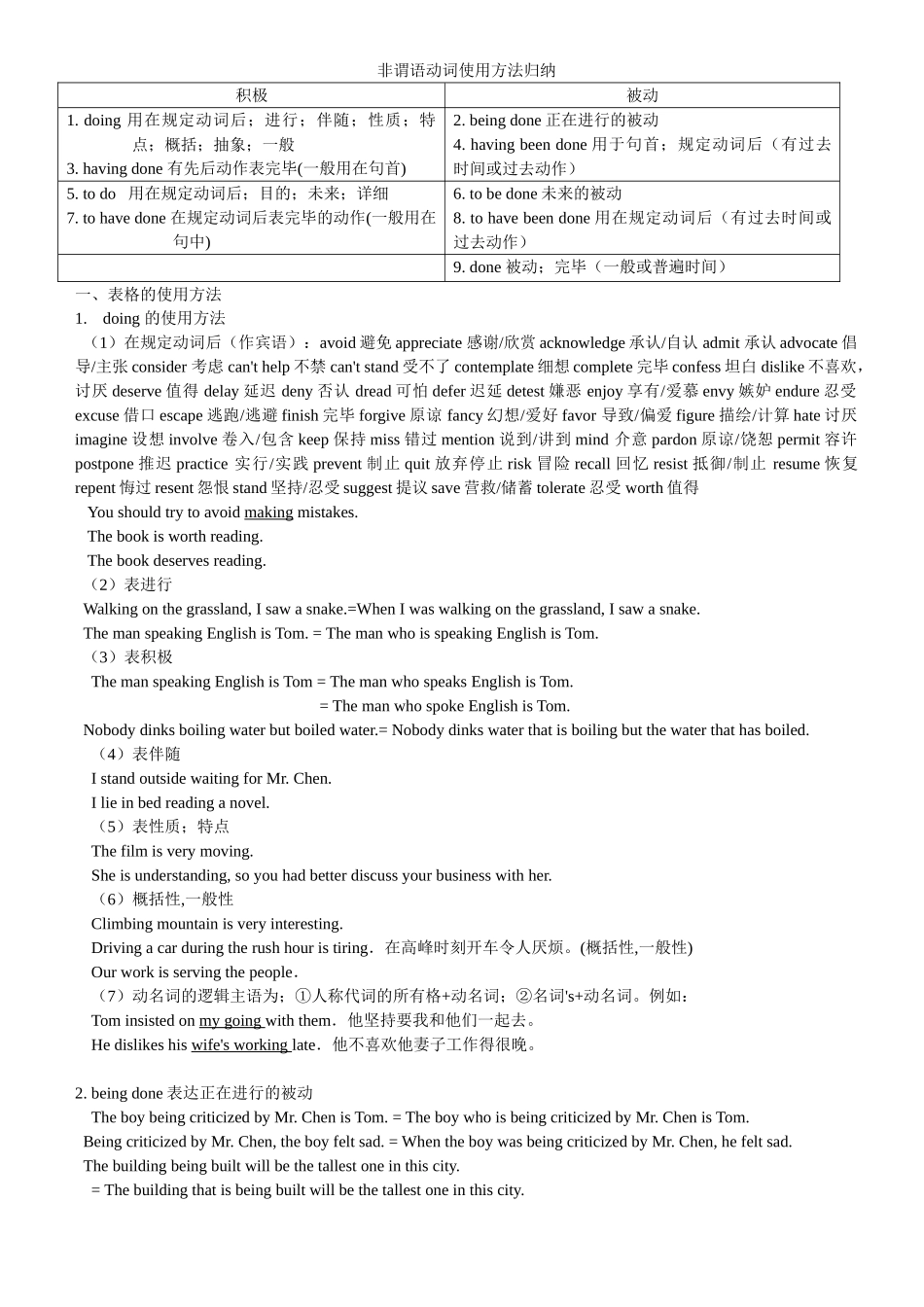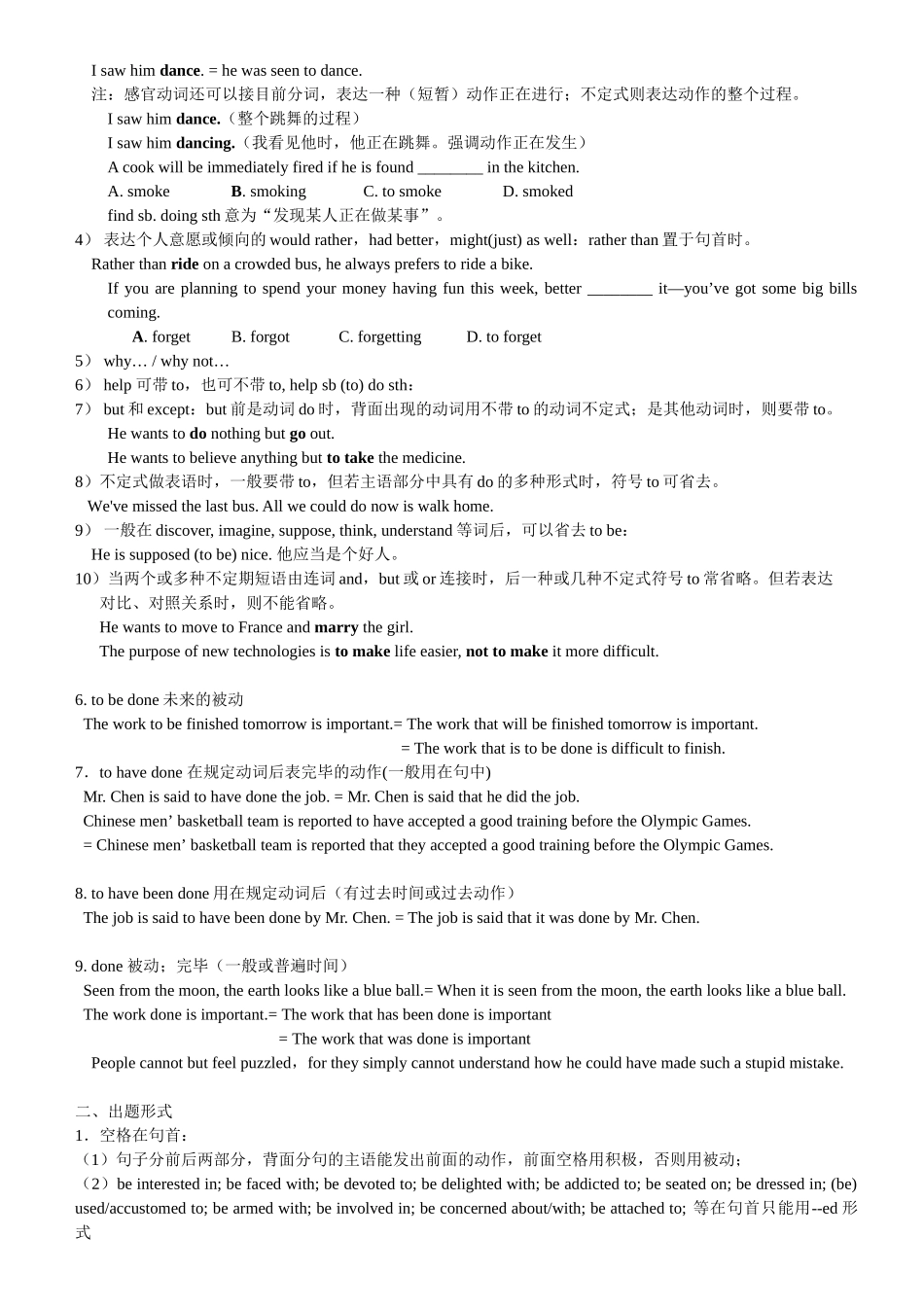非谓语动词使用方法归纳积极被动1. doing 用在规定动词后;进行;伴随;性质;特点;概括;抽象;一般3. having done 有先后动作表完毕(一般用在句首)2. being done 正在进行的被动4. having been done 用于句首;规定动词后(有过去时间或过去动作)5. to do 用在规定动词后;目的;未来;详细7. to have done 在规定动词后表完毕的动作(一般用在句中)6. to be done 未来的被动8. to have been done 用在规定动词后(有过去时间或过去动作)9. done 被动;完毕(一般或普遍时间)一、表格的使用方法1.doing 的使用方法(1)在规定动词后(作宾语):avoid 避免 appreciate 感谢/欣赏 acknowledge 承认/自认 admit 承认 advocate 倡导/主张 consider 考虑 can't help 不禁 can't stand 受不了 contemplate 细想 complete 完毕 confess 坦白 dislike 不喜欢,讨厌 deserve 值得 delay 延迟 deny 否认 dread 可怕 defer 迟延 detest 嫌恶 enjoy 享有/爱慕 envy 嫉妒 endure 忍受excuse 借口 escape 逃跑/逃避 finish 完毕 forgive 原谅 fancy 幻想/爱好 favor 导致/偏爱 figure 描绘/计算 hate 讨厌 imagine 设想 involve 卷入/包含 keep 保持 miss 错过 mention 说到/讲到 mind 介意 pardon 原谅/饶恕 permit 容许 postpone 推迟 practice 实行/实践 prevent 制止 quit 放弃停止 risk 冒险 recall 回忆 resist 抵御/制止 resume 恢复repent 悔过 resent 怨恨 stand 坚持/忍受 suggest 提议 save 营救/储蓄 tolerate 忍受 worth 值得 You should try to avoid making mistakes. The book is worth reading. The book deserves reading. (2)表进行 Walking on the grassland, I saw a snake.=When I was walking on the grassland, I saw a snake. The man speaking English is Tom. = The man who is speaking English is Tom. (3)表积极The man speaking English is Tom = The man who speaks English is Tom.= The man who spoke English is Tom. Nobody dinks boiling water but boiled water.= Nobody dinks water that is boiling but the water that has boiled.(4)表伴随I stand outside wait...


